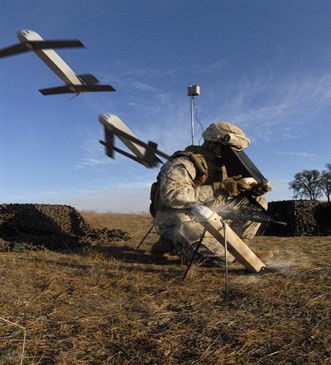As the US Department of Defense accelerates its readiness to cope with potential conflicts with the Chinese Communist Party, a drone that has garnered fame for assisting Ukraine in destroying Russian tanks and repelling Russian attacks is now receiving attention from the Pentagon.
On Monday, May 6, Deputy Secretary of Defense Kathleen Hicks announced the selection of the first batch of projects funded under the “Replicator” program, with a focus on funding the “All Domain Attritable Autonomous Systems.”
Among these projects is the 50-pound (23-kilogram) “Switchblade-600” drone manufactured by AeroVironment Inc., based in Arlington, Virginia. This drone has demonstrated its exceptional utility on the battleground in Ukraine, where it can fly over 24 miles (39 kilometers) and stay airborne for 40 minutes before using its anti-armor warhead to attack targets.
It is expected that this drone will likely be deployed in the Indo-Pacific region, including the Japanese archipelago, the Philippines, Taiwan, and on US Navy vessels, providing a powerful combat capability for the US military.
Established in 1971 by aircraft designer Paul B. MacCready Jr., AeroVironment Inc. is widely known for its light human-powered aircraft and solar-powered aircraft. The company is a top supplier of small drones to the US military, with products like the “Raven,” “Switchblade,” “Wasp,” and “Puma” models.
One of the established goals of the Pentagon’s “Replicator” program is to accelerate the deployment of thousands of “attritable autonomous systems” in various fields by August 2025 to counter the military threat posed by the Chinese Communist Party.
In a statement released on Monday, the US Department of Defense expressed satisfaction with the funding received for the initial phase of the “Replicator” program, amounting to approximately 300 million US dollars. This funding fulfills the confidential request submitted to Congress in January.
The statement further indicated that the Department of Defense has secured around 500 million US dollars for the fiscal year 2024.
According to the statement, since the enactment of the fiscal year 2024 budget, the Department of Defense has collaborated with Congress to meet the requirements for approximately 500 million US dollars through existing authorizations and resources within the defense sector.
The Department of Defense declined to disclose the specific amount of funding allocated to each project selected in the initial phase of the “Replicator” program.
The first batch of projects funded under the “Replicator” program includes a variety of traditional and non-traditional technology companies, such as system suppliers, component manufacturers, and software developers.
The technologies funded in the initial phase of the “Replicator” program include unmanned surface vehicles (USV), unmanned aerial systems (UAS), and counter-unmanned aerial systems (c-UAS), with different sizes and effective payloads, sourced from several traditional and non-traditional suppliers.
Additionally, the first batch of the “Replicator” program encompasses some still classified technologies, including other technologies in the maritime domain and some within the anti-drone system combination.
Hicks stated, “The Department of Defense will begin investing in the scale production of these critical capabilities, taking a significant step towards strengthening defense and technological industrial base. We are proving that the Department of Defense has the ability to break barriers, develop new capabilities and processes for the Department of Defense, including key stakeholders such as Congress.”
In response to the funding allocated for the initial phase of the “Replicator” program, Admiral Samuel Paparo, Commander of the US Indo-Pacific Command, remarked, “This provides us with the capabilities we need at the scale and speed required to continue ensuring the security of the free and open Indo-Pacific.”
Doug Beck, Director of the Defense Innovation Unit (DIU), emphasized the necessity of leveraging the best commercial technologies from non-traditional partners while maintaining traditional defense capabilities to meet the strategic needs of the nation, with the “Replicator” program being the embodiment of this approach.
Vice Chairman of the Joint Chiefs of Staff, Admiral Christopher Grady, highlighted that this is only the beginning, as the “Replicator” program is aiding in initiating critical mass delivery of military equipment. He emphasized the ongoing collaboration with industry partners to provide the necessary products for warfighters, eliminate obstacles, and continuously accelerate progress toward achieving the set goals.

